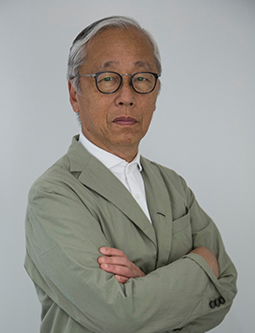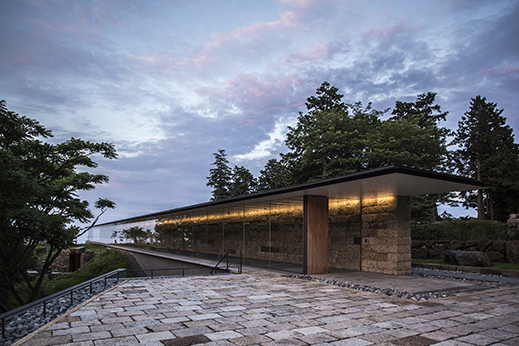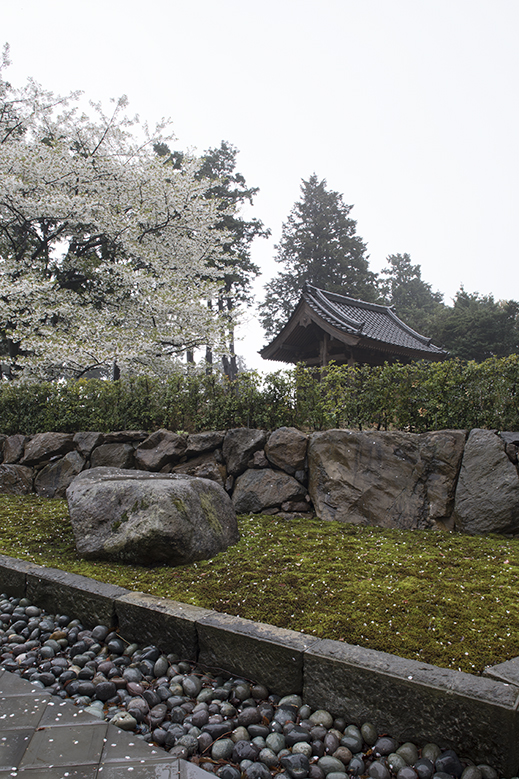 |
Focus features two in-depth reviews each month of fine art, architecture and design exhibitions and events at art museums, galleries and alternative spaces around Japan. The contributors are non-Japanese residents of Japan. |
|
|
 |
 |
 |
Hiroshi Sugimoto's Leap of Faith: The Enoura Observatory
Alice Gordenker |
 |
Contemporary artist Hiroshi Sugimoto looking out on Sagami Bay from the new Enoura Observatory art complex he created near Odawara, about an hour from Tokyo. © Odawara Art Foundation |
More than ten years in the making, Hiroshi Sugimoto's new hilltop center for the arts is finally ready to open its doors. Situated amid picturesque citrus groves in the tiny hamlet of Enoura, and offering breathtaking views of the Pacific Ocean, the multidisciplinary complex will welcome its first public visitors on 9 October. The structures, all personally designed by Sugimoto, include an exhibition space, two outdoor stages, a teahouse, and the offices of his Odawara Art Foundation.
Sugimoto was born and educated in Japan but has spent more than five decades overseas, working primarily from New York. He achieved fame first and foremost as a photographer, but in recent years has successfully expanded into sculpture, architectural design, and even classical Japanese puppetry. Now approaching 70, and immersed in ponderings on history and the origins of consciousness, he says he was drawn back to Japan, and specifically to the Odawara area that includes Enoura, "as if guided by an unseen hand." Here he hopes to share Japanese culture and explore with others "new directions in art by returning to ancient observations of the heavens." Hence the "observatory" in the new facility's name.
|
 |
|
|
|
Hiroshi Sugimoto
|
"Today, as we stand at a critical point in our evolution, art has lost its onetime clarity of purpose," Sugimoto puts forth in written materials about the new facility, his most ambitious project to date. "What should art today express? We cannot answer this question simply, but what we can do is return to the wellspring of human consciousness, explore its sources, and chart the course it has followed thus far." Such work requires a beautiful natural setting, according to Sugimoto, because Japanese culture is rooted in "the art of living in harmony with nature."
The site is indeed beautiful. Sugimoto wants visitors to experience what Japan was like in pre-modern times, before the coastline was refashioned in concrete and a convenience store erected on every corner. Accordingly, most of the 60,000 square meters of forest and farmland have been left undeveloped, with his new constructions restricted to an area of about 10,000 square meters.
The main structure, or at least the most dramatic, is the Summer Solstice Observation Gallery. Situated 100 meters above sea level and running 100 meters in length, it is a straight, narrow space walled on one side entirely in glass -- 37 huge panes lined up side by side without interrupting columns, or indeed any visible supports. The opposing wall is crafted from one of Japan's most expressive building materials, a porous, easily cut volcanic rock called Oya stone that, when left unpolished and in its natural state, presents a pocked surface full of pebbles and irregular cavities. It is the same stone selected by American architect Frank Lloyd Wright for his iconic Imperial Hotel, a Tokyo landmark from 1923 until 1968. The final 12-meter stretch of the gallery juts out over the steeply sloping land and doubles as a viewing platform over Sagami Bay.
 |
|
The Summer Solstice Observation Gallery. © Odawara Art Foundation |
The Enoura Observatory complex also features an outdoor stage made mostly of stones excavated while the site was being prepared, some of which -- judging from the shape and chisel marks -- seem to have originally been destined for the walls of Edo Castle. (Quarries located in nearby Manazuru and Nebukawa supplied much of the stone when the castle was constructed.) Although built to the traditional dimensions of a Noh stage, the open-air platform will be used for various performance genres. There is also a second stage made of optical glass that once a year, weather permitting, will be naturally illuminated from beneath by the sun. Sugimoto constructed a 70-meter tunnel next to the stage at precisely the correct position to channel the light projected by the sun as it rises on the morning of the winter solstice, an event celebrated by ancient cultures around the world as a turning point in the cycle of death and rebirth. The cut edges of the glass will catch the light, causing the stage to glow and appear to float on its wooden frame above the sea.
 |
|
The Optical Glass Stage. © Odawara Art Foundation |
Sugimoto also built a teahouse on the grounds, an homage to a historical teahouse that once stood nearby in Enoura, attributed to the great 16th-century tea master Sen no Rikyu. Because Rikyu favored simple and unpretentious materials, Sugimoto scavenged the rusted corrugated-steel panels off a nearby farm shed to serve as the roof of his own teahouse. Raindrops will drum on the iron roof in inclement weather, so Sugimoto named the tearoom "Uchoten," written with the characters for rain, listen and heaven. It features a nijiriguchi crawl door, a feature of traditional teahouse architecture that forces visitors to bend their heads and humble themselves on all fours if they wish to enter.
A garden that is part of the site incorporates historical stones Sugimoto gathered from all over Japan. Examples include a stone sarcophagus lid from the Kofun period (250-538) and a 16th-century tsukubai, the stone washbasin traditionally provided outside holy places for ritual handwashing and rinsing of the mouth.
 |
|
In the foreground, a stone that was part of the foundation of the Gojo-Ohashi bridge in Kyoto. Behind it, a gate donated by the Nezu Museum in Tokyo. |
Eventually, the Enoura Observatory will host exhibitions by other artists, performances, and conferences on the arts, but for the immediate future it's all Sugimoto and his vision. For the opening, and until an unspecified date, seven photographs from Sugimoto's ongoing "Seascape" series will be on display in the Summer Solstice Gallery.
"Seascape, Sea of Japan, Oki" (1987). Gelatin silver print © Hiroshi Sugimoto / Courtesy of Gallery Koyanagi. A selection of works from the "Seascape" series will be on exhibit in the Summer Solstice Observation Gallery from October. |
Reservations are a must, with the website currently accepting reservations through January 2018. To prevent crowding and provide each visitor with adequate space to fully appreciate the experience, appointment slots are limited and visiting time restricted to two hours. One does wonder if that's enough time to rediscover the wellspring of human consciousness and chart new directions in art, but hopefully Sugimoto's imaginative constructions will point the way.
Photographs courtesy of Odawara Art Foundation.
|
 |
| Enoura Observatory / Odawara Art Foundation |
362-1 Enoura, Odawara, Kanagawa Prefecture
Phone: 0465-42-9170
Hours: Open Thursday-Tuesday by appointment only. Closed Wednesdays. Timed entrance at 10:00, 13:00 and 16:00 (April-October), or 10:00 and 13:00 (November-March). Children under 12 not permitted. Reservations can be made online in English at http://www.odawara-af.com/en/enoura/ticket/
Access: Enoura is in western Kanagawa Prefecture, about 90 km from central Tokyo. If arriving by private car, be sure to book a parking space when making your reservation. To visit by public transportation, take the JR Tokaido Main Line / Tokyo-Ueno Line, which can be boarded at the major transportation hubs of Tokyo, Shinagawa and Yokohama stations, to Nebukawa station. The museum discourages arriving on foot and will send a free shuttle timed for trains and museum entrance times. The shuttle should be requested when making your museum reservation. |
|
 |
 |
Alice Gordenker
Alice Gordenker is a writer and translator based in Tokyo, where she has lived for more than 17 years. For over a decade, she penned the "So, What the Heck Is That?" column for The Japan Times, providing in-depth reports on everything from industrial safety to traditional talismans. She translates and consults for museums, and has a special interest in making Japanese museums more accessible for visitors from other countries. |
|
 |
|